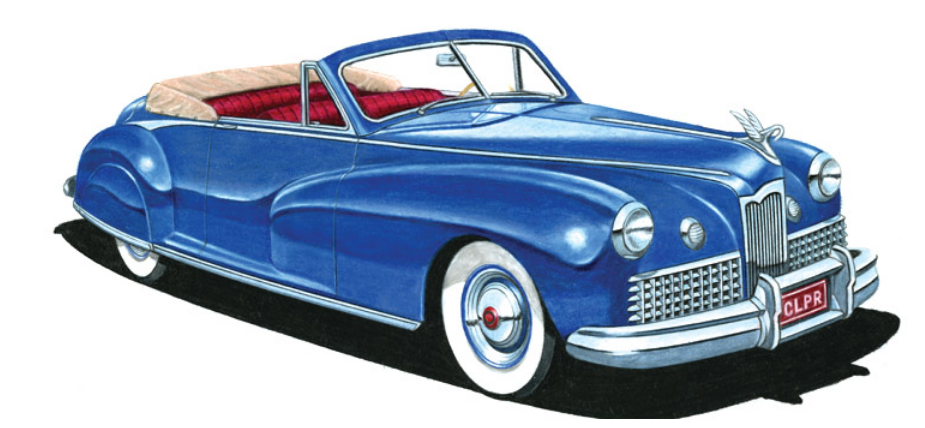
Note: Frank Peiler is the publisher emeritus of Consumer Guide Automotive. For more of Frank’s “What If?” artwork, check out his blogs on the 1957 Packard, Cord 810, and 1957 Mercury Turnpike.
Conceived by Edsel Ford and designed by E. T. “Bob” Gregorie, the first Lincoln Continental appeared in 1939. It was shown for the first time in West Palm Beach, Florida, where Edsel was vacationing. Though just a design curiosity in 1939, it must have shocked the auto industry when the production version appeared in 1940 as a convertible and a fixed-roof club coupe. It’s puzzling that other auto companies didn’t introduce a “Continental” of their own in 1941. However, if they had, they might have looked like the renderings pictured here.
Like the Lincoln Continental, all of these cars received extensive body alterations in my drawings, including:
- sectional body strips (2″-3″) of sheetmetal removed from the center of the body and cowl
- mildly chopped tops
- lengthened hoods
- lengthened frames ahead of the cowls
- reworked front and rear fenders
- reworked or restyled grilles
- new trunks to accommodate the exterior-mounted “continental” spare tires
1941 Continental Gallery
Cadillac 60 Special Formal Sport Coupe
Besides the alterations mentioned above, this car has been converted from four doors to two. It receives the front fenders designed for the next year’s (1942) Cadillac.
Chrysler New Yorker Manhattan
Rather than using a conventional coupe body, I decided to use the more graceful sedan body. I increased the wheelbase aft of the C-pillars, and the rear fenders went with it. This made a natural space for the continental spare tire. I also moved the front cowl back several inches, thereby increasing the hood’s length. The one-piece windshield is from an Imperial limo.
Packard Clipper Pan American
Packard offered many custom bodies on its senior cars, but nothing was Clipper-based, so that’s what I started with.
Studebaker Envoy Club Coupe and Convertible
No surprises here. I just wanted to take a pretty car and make it even prettier.
Hudson Commodore Europe Coupe
It’s hard to make silk purse out of a sow’s ear, but I tried. I extended the wheelbase way out in front of the cowl, and I used a two-tone design in an attempt to hide Hudson’s bone-deep homeliness.
Nash Ambassador N-Job or NSX
I previewed the 1941 front-end design and incorporated elements from the Count Alexis de Sakhnoffsky 1940 Nash Special. This might have been a bestseller for Nash.
Hupmobile Skylark Wingman
This car would have been virtually hand-built, since very few of the original Cord/Graham/Hupp body parts would fit. But visually, it still retains most of the original appearance.
Willys American Patriot Coupe
This design features 1930s-style two-toning and an impressively long nose, but it would still be equipped with a small 4-cylinder engine. It would be “all show and no go.” Add a supercharger and it might have barely acceptable performance.
Crosley Super Swank Four
This one is really a stretch, literally and figuratively. It’s lower and longer with lots of chrome and leather, but it is still a tiny, tiny car. Because Powel Crosley had yet to develop a 4-cylinder engine, he could have purchased them from Willys. Wow! A 63-horsepower Crosley.
1941 Continental
